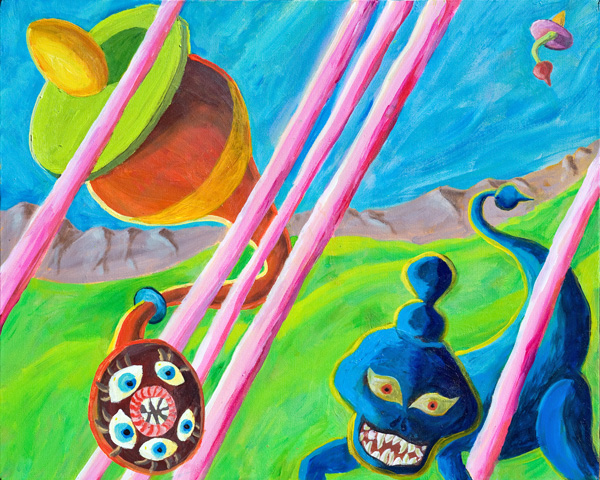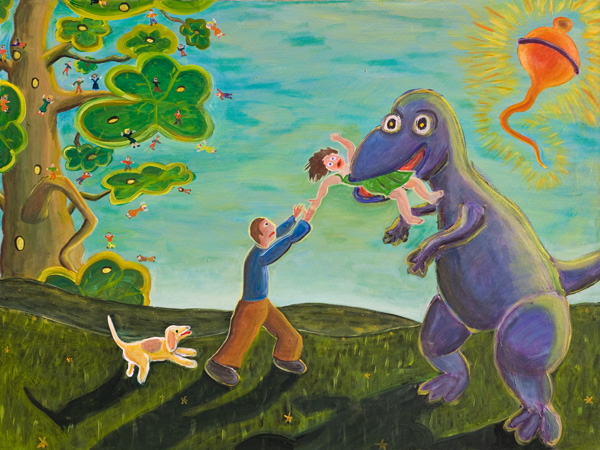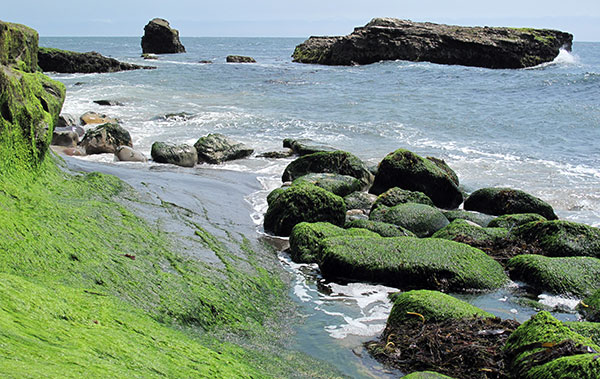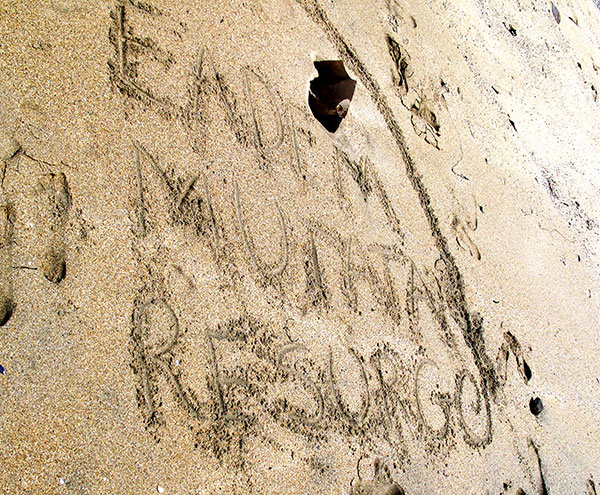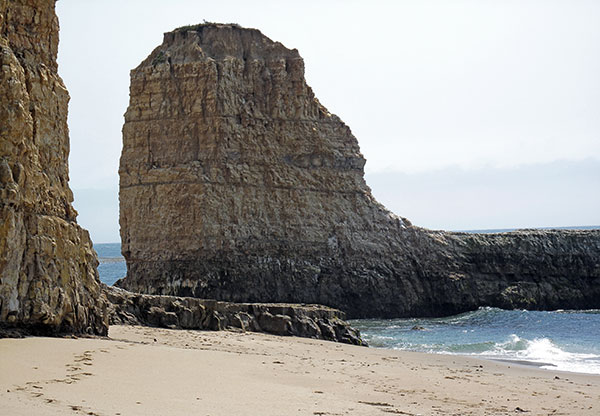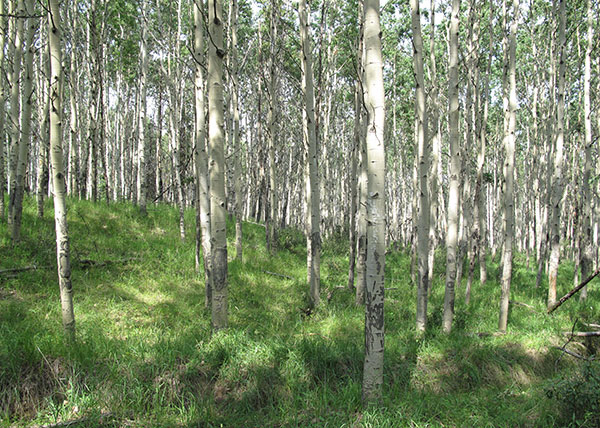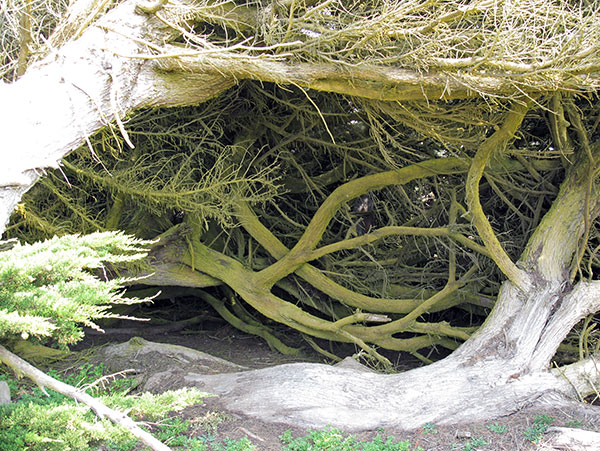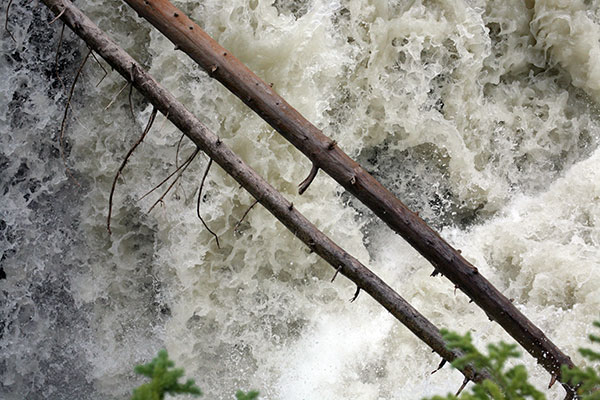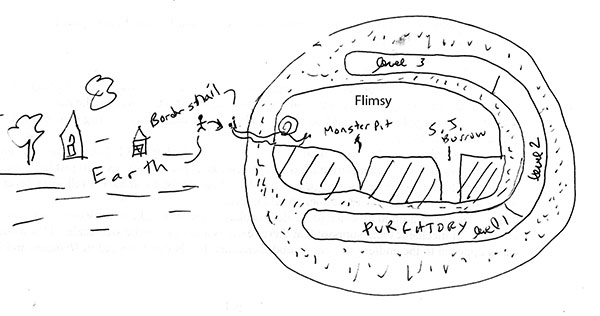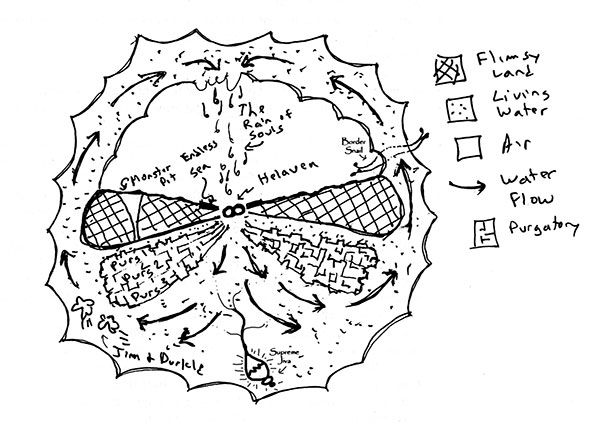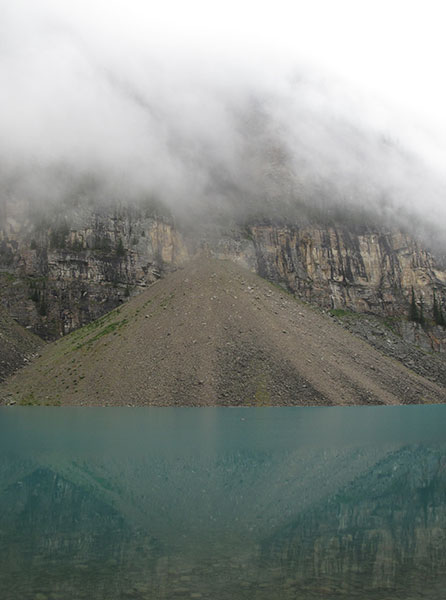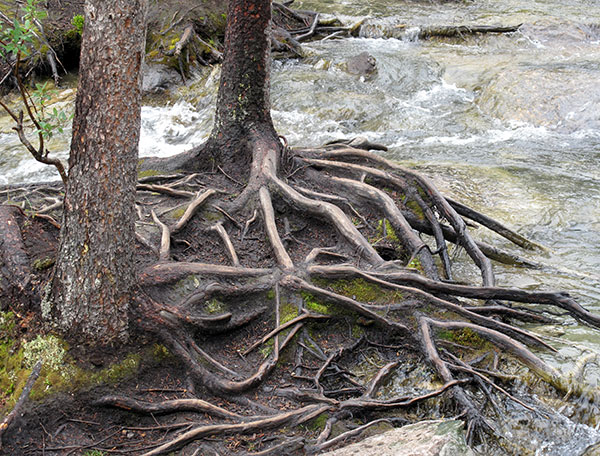I recently acquired a copy of my old friend Clifford Pickover’s new tome, The Math Book , a really attractive and reasonably priced volume with 250 full page color illustrations, each illustration accompanied by a single-page description.
In Pickover’s words, “My goal in writing The Math Book is to provide a wide audience with a brief guide to important mathematical ideas and thinkers, with entries short enough to digest in a few minutes.”
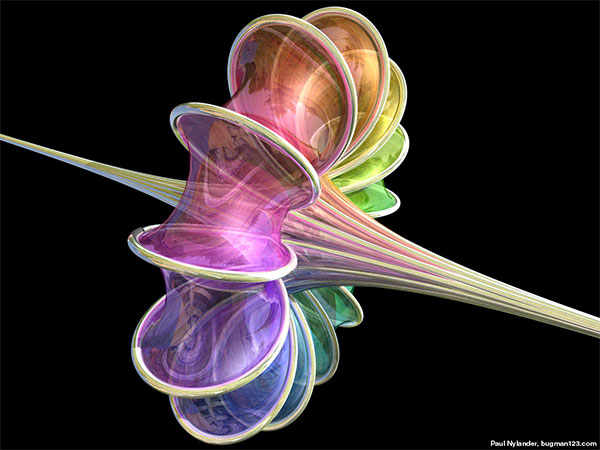
[Breather Pseudosphere, Copyright (C) 2006 by Paul Nylander. See a larger image on Paul’s site.]
One of my favorite images in The Math Book is Paul Nylander’s rendition of the so-called Breather Pseudosphere. The idea behind this surface is that it has a constant curvature of -1, as opposed to a sphere, which might have a constant curvature of +1, and also as opposed to a plane, which has a constant curvature of 0. You’re supposed to ignore the ribs, and you need to accept that the surface intersects itself along a circle, which is clearer in the image below, by Xah Lee. You can rotate this image on Xah’s site.
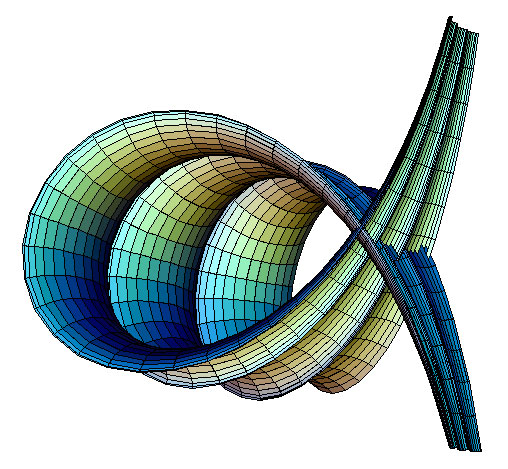
[Segment of a Breather Pseudosphere, Copyright 2006 by Xah Lee.]
From the arcane math references that I’ve consulted—see for instance the Wikipedia “breather” page—I gather that the breather pseudosphere can in fact “breathe” in the sense that, by diddling a certain parameter, someone (not me anymore) could create a sequence of images of it and then assemble these into a video in which this negatively curved object will pulsate like some omnivorous space squid from Dimension Z. If any of you ultra-math-and-CS maniacs out there has access to such a video—or feels the urge to create one—share the link with us via a comment on this post!
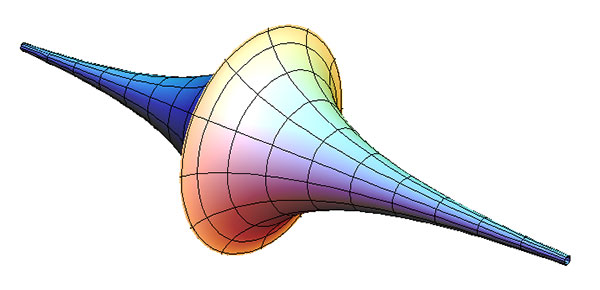
[A traditional Beltrami pseudosphere, Copyright (C) 2006 by Richard Palais and the the 3DXM consortium.]
As Pickover’s book explains, the notion of pseudospheres was invented in 1868 by the mathematician Eugenio Beltrami, who formulated the more familiar “double trumpet” model, as shown above, created by the 3DXM Consortium . (3DXM is a graphics program, now called 3D-XplorMath.)
You can find further images of various kinds of pseudospheres (these images by Xah Lee, Luc Bernard and other members of the 3DXM consortium) on the Gallery of Pseudospherical surfaces at the Virtual Math Museum. This page includes an essay “About Pseudospherical Surfaces,” which explains (amid much gnarly math) that, at least when depicted in our normal 3D space, any surface of constant curvature -1 will include “singularities” in the forms of self-intersections or cuspy lines where the surface has a crease in it—like those ribs in the breather pseudosphere or like the edge where Beltrami’s two trumpets meet. But you can smoothly embed pseudospheres into 4D space, I believe.
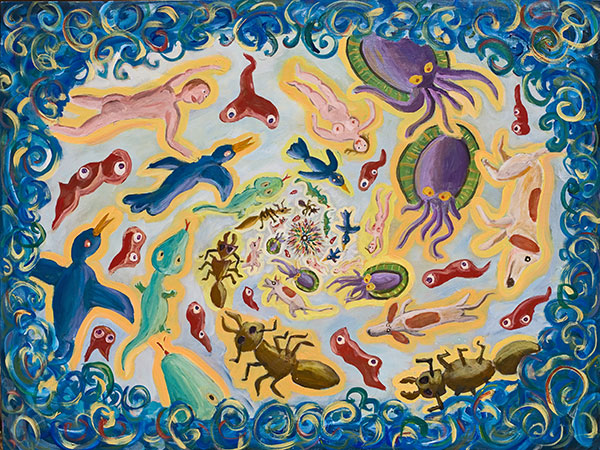
As I was discussing in an earlier post, another way to create a negatively curved space is to start with a disk of some ductile material, and the keep stretching the disk all over, but without overly stretching the outer edge. The inside of the disk acquires more area than one would find in a regular flat disk. The extra room is there because the interior is now a negatively curved surface. And I think this surface is something like a pseudosphere. (A different approach is to stretch the outer edge of the disk to infinite length, and this is a different model of negatively curved space called the Poincaré plane.)
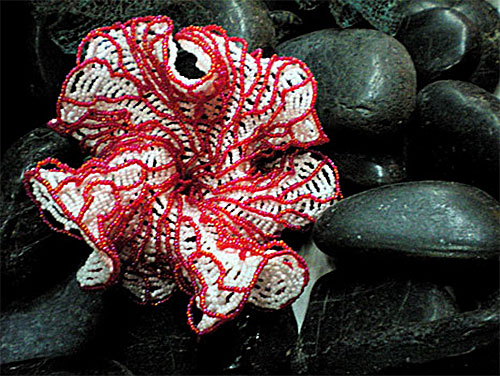
[Copyright (C) 2009 by Vonda N. McIntyre . White hyperbolic anemone with red veins.]
Some knitters and beaders have crafted physical objects like the edge-stretched pseudosphere, some of which appear among a wild Crochet Reef show in 2009. Among the goodies on display was a bead construction of a pseudospherical sea anenome by no less a personage than the fantasy and SF writer Vonda N. McIntyre —see the MathCrafts section of her home page.
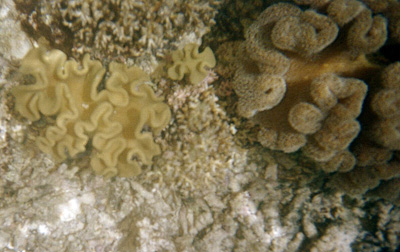
When I was snorkeling near Palau a few years ago, I noticed that many naturally occurring soft corals are indeed negatively curved surfaces.
It’s worth remembering, by the way, that if you’re living in a very small house, it might be nice to have negatively curved space inside…









